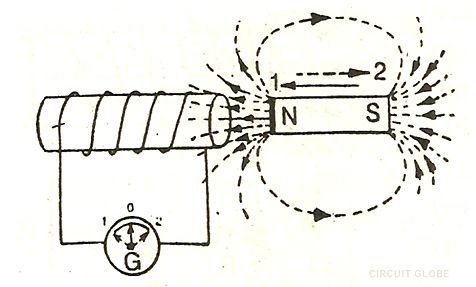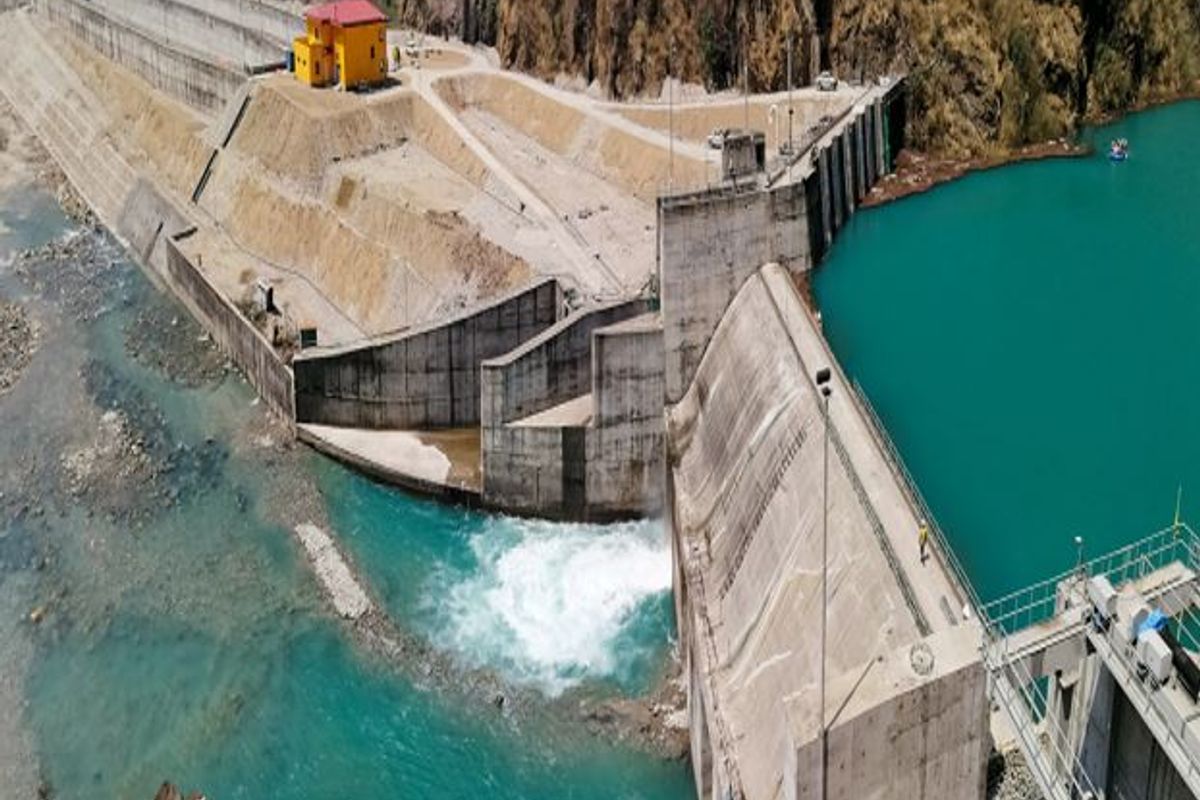Electromagnetic Induction
Subject: Science

Overview
Michael Faraday discovered electromagnetic induction, which is the process of producing electromotive force (e.m.f.) in a conductor when there is a change in the magnetic flux associated with that conductor, in 1831. The intensity of the magnetic field and the coil's number of turns determine the voltage produced within it. Faraday's Law states that an electromotive force (e.m.f.) is created in a conductor when it moves relative to a magnet, and the amount of this force is exactly proportional to the rate at which the magnetic flux connected to the conductor changes. Dynamo and AC generators are used to generate electricity on a large scale, using various sources such as hydropower stations, thermal plants, nuclear power plants, and alternative current generators. The hydroelectric potential of Nepal is 2200 MW, with 487 MW of electricity produced from thermal plants and 3219 MW from hydroelectric projects.
The primary source of current was the voltaic cell, which was developed about 1800 AD. Michael Faraday discovered in 1831 that when a conducting wire cuts the magnetic force lines perpendicularly, the conducting wire generates a voltage and when the two ends of the wire are joined in a circuit, an electric current flows. The field of power sources underwent a significant shift as a result of this finding.
The magnetic flux, or the quantity of netic lines of force on a bar magnet's surface, varies continuously when the magnet is moved within and outside of a conductor. Voltage is thus induced in the coil. The oltage in a conducting wire coil is induced even when the coil is rotated in a magnetic field and the magnetic flux connected to it is continually modified. The labor done while hanging the coil or magnet's speed, or mechanical energy, is converted into electrical energy in both situations.
In this sense, electromagnetic induction is the process of producing electromotive force (e.m.f.), or voltage, in a conductor when there is a change in the magnetic flux associated with that conductor.
Faraday's Law of Electromagnetic Induction
The magnetic field's (also known as the electromotive force) intensity and the coil's number of turns determine the voltage that is generated within it. The voltage produced increases with the coil's number of turns and magnetic field intensity. The rate at which the magnetic field lines connect to the coil also affects the size of the returning voltage. Very little voltage is produced in the coil when the magnet is moved in and out at a moderate pace; however, more voltage is induced in the coil when the magnet is moved in and out at a faster speed.
According to the magnitude of the induced e.m.f., the following is a statement of Faraday's Law:
An electromotive force (e.m.f.) is created in a conductor when it moves relative to a magnet, and the amount of this force is exactly proportional to the rate at which the magnetic flux connected to the conductor changes.
By virtue of the change in magnetic flux associated with the coil, Faraday's law states that when a conducting coil is rotated inside a magnetic field, an e.m.f. is induced in the coil. This is the way a generator operates. As long as the coil is moving or the circuit's magnetic flux is changing, there will be an induced e.m.f. The rate of change of magnetic flux associated with the coil rises with an increase in the coil's number of turns, magnet strength, or rotational speed. As a result, the induced e.m.f. grows in amplitude.
Dynamo and A.C. Generator
A dynamo is used in motorcycles and bicycles to generate electric electricity. An a.c. generator generates current similar to this for use in routine household electrical circuits. On a small scale, current is induced using a dynamo; on a large scale, current is generated using a generator.
The bicycle dynamo rotates a magnet, as seen in the figure. In order to cut the magnetic lines of force, a coil is kept closer to the magnet. The magnet is spun by creating friction between the bicycle tire and the dynamo cap in order to alter the magnetic flux associated with the coil. As a result, the coil's induced voltage depends on its number of turns, the strength of the magnetic field, and the magnet's rotational speed, or the rate at which the magnetic flux changes.
Large-scale Sources of Electricity
The generator generates a significant amount of energy. This is accomplished by rapidly rotating a coil that is positioned in a strong magnetic field. As shown in the figure, the water stored in the dam of the hydropower station is allowed to flow at high pressure through the tunnel to the turbines of the generator and rotated with great speed to produce large amounts of electricity from the generators in the hydropower station.Similarly, thermal plants employ fossil fuels like coal, diesel, etc. to generate electricity. In a thermal plant run with coal, a large amount of coal is burned to produce heat energy, which is used to heat water and produce vapor. This method produces a lot of vapour, which drives the generator's rotor to create energy under high pressure.In the diesel power plant, the diesel engine rotates the turbine. In addition to the previously listed sources, wind energy drives the generator's turbine in a windmill to create power.
Nuclear power plants also use the same operating principles as a coal-fired thermal plant. Instead of using coal, the heat energy required to boil water is obtained from the tremendous amount of energy released during the fission of radioactive elements like uranium under controlled mechanisms. This technology for producing electricity is not used in Nepal. According to the data published by the Nepal Electricity Authority in 2022 AD, the hydroelectric potential of Nepal is 2200 MW. In addition, about 487 MW of electricity is produced in Dubahi and Hetauda from the thermal plants. According to the report mentioned above, hydroelectric projects of about 487 MW capacity are under construction. Additional 3219 MW of electricity from the Upper Arun Project, Uttar Ganga, and Dudha Kosi (with reservoir) Hydroelectricity Project have been proposed.
Alternating Current Generator
In the figure, a rectangular coil of conducting wire is placed in the magnetic field of an a.c. generator. As the coil rotates, it cuts the magnetic field, and the magnetic flux associated with the coil changes. As a result, an electromotive force (e.m.f.) is produced in the coil, and its magnitude is directly proportional to the rate of change of the magnetic flux linkage.
Things to remember
- Michael Faraday discovered in 1831 that a conducting wire cuts magnetic force lines perpendicularly, generating a voltage and an electric current.
- Magnetic flux, or the quantity of netic lines of force on a bar magnet's surface, varies continuously when the magnet is moved within and outside a conductor.
- Electromagnetic induction is the process of producing electromotive force (e.m.f.), or voltage, in a conductor when there is a change in the magnetic flux associated with that conductor.
- Faraday's law states that when an electromotive force (e.m.f.) is created in a conductor when it moves relative to a magnet, the amount of this force is exactly proportional to the rate at which the magnetic flux connected to the conductor changes.
- Dynamos are used in motorcycles and bicycles to generate electric electricity.
- A.C. generators generate current similar to this for use in routine household electrical circuits.
- Generators generate a significant amount of energy by rapidly rotating a coil in a strong magnetic field.
© 2021 Saralmind. All Rights Reserved.





 Login with google
Login with google